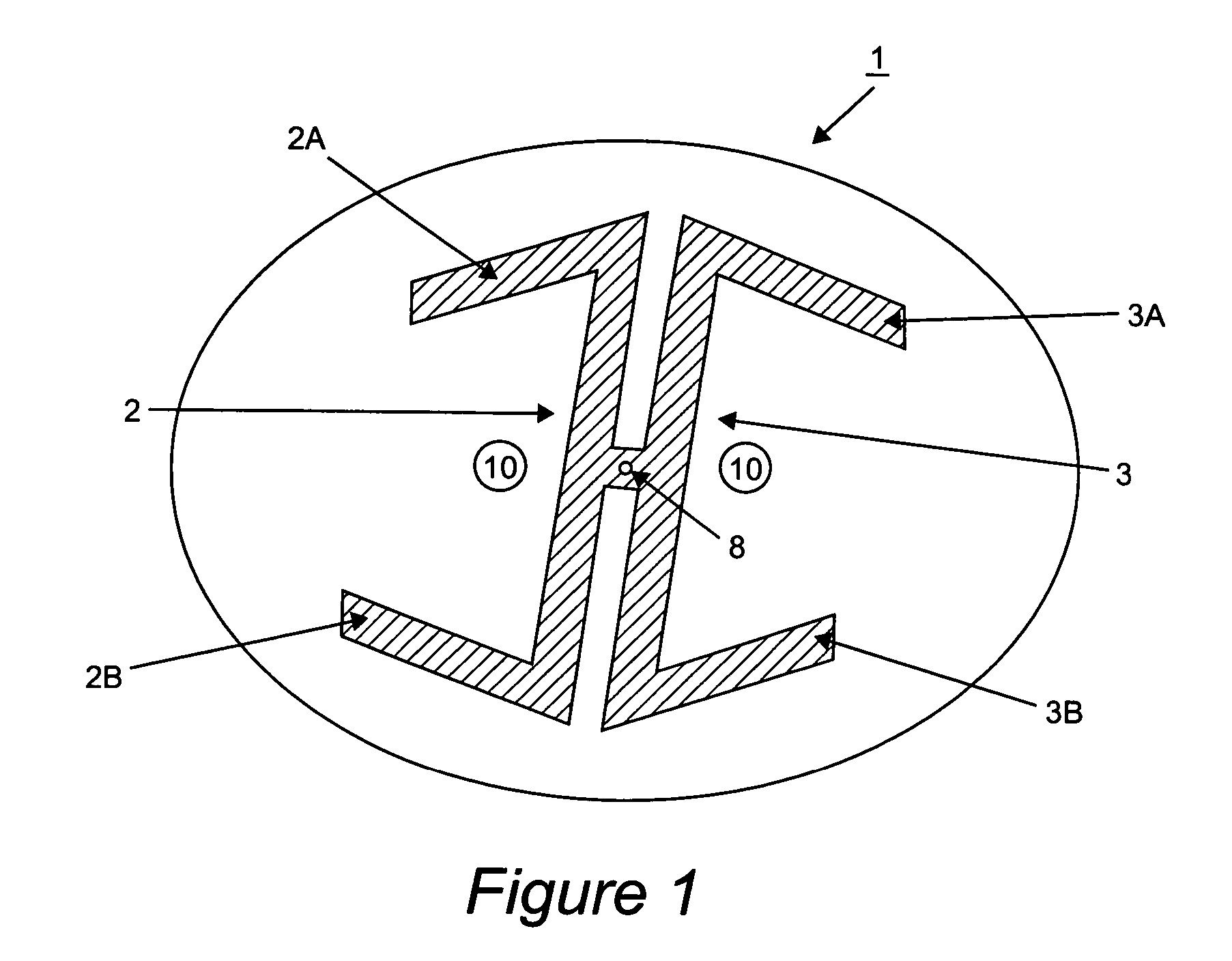Horizontally polarized omni-directional antenna
a dipole antenna and horizontal polarization technology, applied in the structural form of radiating elements, elongated active elements, resonance antennas, etc., can solve the problems of significant interference, inability to achieve maximum signal strength, and inability to meet broadband impedance, so as to improve broadband impedance match
- Summary
- Abstract
- Description
- Claims
- Application Information
AI Technical Summary
Benefits of technology
Problems solved by technology
Method used
Image
Examples
Embodiment Construction
[0021] Referring now to the drawings, FIGS. 1 and 2 show the dipole elements and feed network patterned onto a circuit board. The board consists of a dielectric substrate that is plated on both sides with a metalization. In an example of this embodiment, the board is {fraction (1 / 16)}″ thick FR4 plated with 1 oz copper on both the top and bottom. FIG. 1 shows the metalization that is patterned onto the bottom of the circuit board 1, while FIG. 2 shows the metalization that is patterned onto the top of the circuit board 1. It should be understood that the metalization can be using other materials such as silver, tin, metal alloys, etc. and not be limited to copper.
[0022]FIG. 1 shows dipole elements 2 and 3 that are formed on the bottom of the circuit board 1. Elements 2 and 3 comprise the initial bent form of the dipole. Dipole element 2 has bent subelements 2A and 2B while dipole element 3 has bent subelements 3A and 3B. Dipole elements 2 and 3 are mirror images of each other and a...
PUM
 Login to View More
Login to View More Abstract
Description
Claims
Application Information
 Login to View More
Login to View More - R&D
- Intellectual Property
- Life Sciences
- Materials
- Tech Scout
- Unparalleled Data Quality
- Higher Quality Content
- 60% Fewer Hallucinations
Browse by: Latest US Patents, China's latest patents, Technical Efficacy Thesaurus, Application Domain, Technology Topic, Popular Technical Reports.
© 2025 PatSnap. All rights reserved.Legal|Privacy policy|Modern Slavery Act Transparency Statement|Sitemap|About US| Contact US: help@patsnap.com



